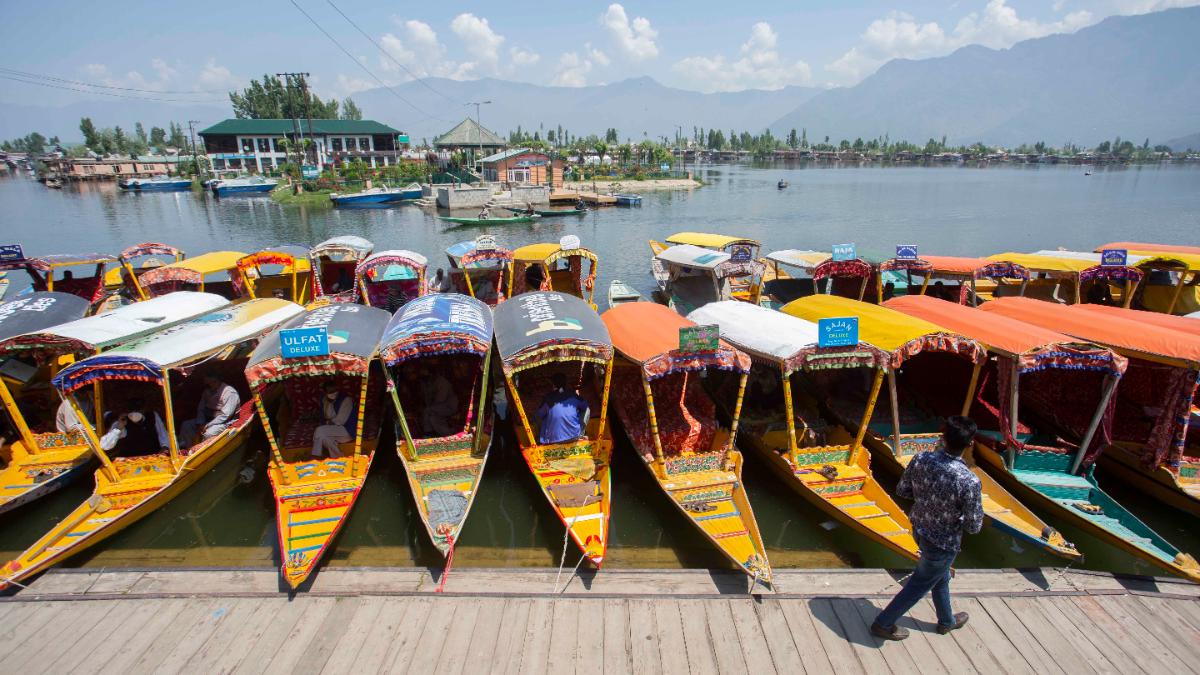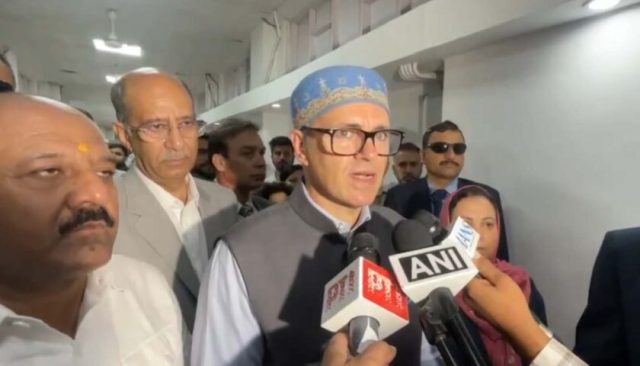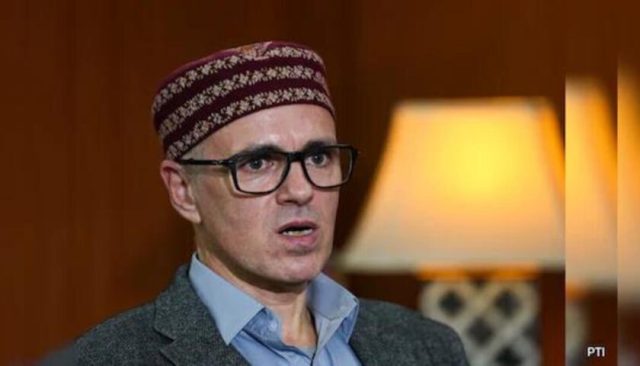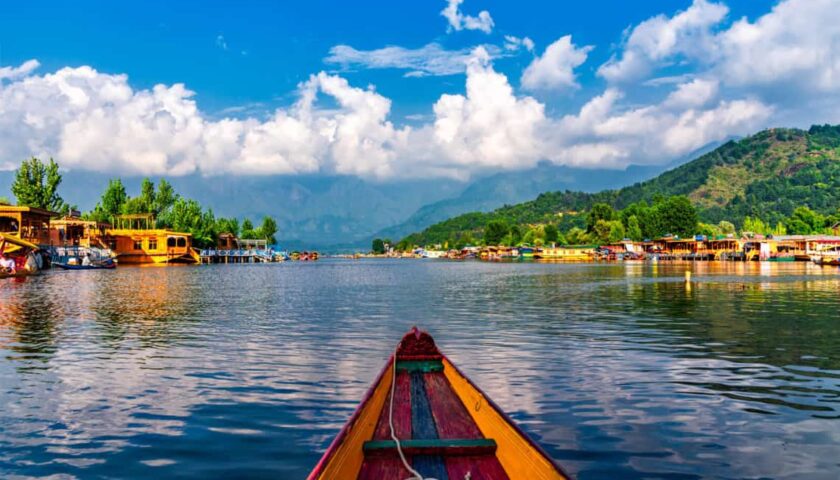Kashmir This Week: Deep Analysis of Srinagar & Anantnag Flood Threats, Highway Shutdown, Hazrat Bal Row & Mehraj Malik
By: Javid Amin | 10 September 2025
Kashmir’s Week of Many Storms
Kashmir, a land celebrated for its pristine lakes, snow-kissed peaks, and timeless shrines, found itself once again grappling with nature’s fury and political tremors this week. The Valley witnessed ominous flood threats in Srinagar, waterlogging in Anantnag that crippled highways, religious tensions around the revered Hazrat Bal shrine, and the controversial detention of AAP leader Mehraj Malik under the Public Safety Act (PSA).
Each story, while different on the surface, shares a deeper thread—the fragility of Kashmir’s infrastructure, governance, and social trust. The week reminds us that here, nature and politics often converge, shaping not just headlines but lives.
This is a deep dive into the events of the week, their underlying causes, and what they mean for Kashmir’s future.
Srinagar Flood Threat: The Valley Holds Its Breath
The Situation on the Ground
Srinagar, the heart of Kashmir, stood on edge as the Jhelum River swelled beyond comfort levels following days of heavy rainfall. By midweek, water levels in key gauges like Sangam and Ram Munshi Bagh had inched close to or crossed danger marks, triggering flood advisories. Low-lying areas, particularly around Bemina, Qamarwari, and Rajbagh, reported waterlogging and seepage.
The administration, while assuring that major embankments remained secure, admitted that the situation was “sensitive” and required close monitoring. Relief and rescue teams were placed on standby, sandbags were deployed at vulnerable spots, and schools in flood-prone zones were advised to remain shut.
Meteorological forecasts suggested a gradual easing of rains, offering hope that the worst could be averted. But for Srinagar’s residents, déjà vu from the catastrophic 2014 floods loomed large.
The Human Angle: Anxiety in the City of Lakes
For ordinary citizens, a flood threat is not just about rising water levels—it’s about memories, livelihoods, and survival.
-
Shopkeepers in Lal Chowk rushed to move stock from basements to higher floors, recalling how they had lost everything a decade ago.
-
Families in Bemina spoke of sleepless nights, keeping valuables packed in bags in case they had to flee at short notice.
-
Students preparing for exams wondered if schools would shift online again, compounding the disruption they’ve already endured during years of conflict and COVID.
Rafiq Ahmad, a Srinagar resident, put it simply: “It’s not the water we fear, it’s the helplessness. The last time, no one came to help us on time. We were on our own.”
A History of Floods: Learning or Forgetting?
Flooding is not new to Srinagar. The Jhelum, while a lifeline, has also been a recurring threat.
-
2014 floods devastated nearly 80% of Srinagar, displacing half a million people and causing damages worth thousands of crores.
-
2017 and 2022 saw repeated high-alert situations, though not of the same scale.
-
Experts have consistently warned that encroachment on floodplains, silted riverbeds, and outdated drainage systems make the city extremely vulnerable.
Despite billions allocated for flood mitigation projects—like dredging the Jhelum, creating flood spill channels, and improving urban drainage—the execution has been slow, patchy, and marred by bureaucratic delays.
As urban planner Basharat Wani noted in a local seminar: “We don’t lack plans; we lack political will and coordination. Nature gives us warnings every year, but our responses remain reactive, not proactive.”
Why This Week’s Threat Matters
Even if major flooding is averted this time, the psychological scars of past disasters deepen every alert. Floods in Srinagar don’t just wash away property—they wash away trust in governance.
For Kashmir’s capital city, a resilient flood management system is not optional. It is central to the safety, economy, and dignity of its people. Each new flood scare is a reminder that in the Valley, climate risks and governance gaps often merge into one overwhelming challenge.
Anantnag Floods & Highway Shutdown: A Valley Cut Off
The Flooded South: Anantnag Underwater
While Srinagar was holding its breath over the Jhelum’s rising waters, Anantnag, the gateway to South Kashmir, was already in distress. Days of relentless rain turned roads into streams, markets into ponds, and homes into fragile islands.
Video clips circulating on social media showed residents wading waist-deep in water, pushing carts, or ferrying children across makeshift wooden planks. In areas like Janglat Mandi, Khanabal, and Bijbehara, the drainage collapse was painfully visible.
For local businesses, especially small traders and fruit vendors, the waterlogging was devastating. Basements of shops filled overnight, perishable goods rotted, and supply lines froze.
A fruit trader summed it up grimly: “We had no warning. By the time we covered the cartons, everything was already wet. For us, one lost day is a lost season.”
Highways Shut: Kashmir’s Lifeline Severed
The rains did not just flood Anantnag—they cut the Valley’s lifeline. The Jammu-Srinagar National Highway (NH-44), the only all-weather road linking Kashmir with the rest of India, was closed at multiple points due to landslides, mudslides, and overflowing streams.
This closure had a domino effect:
-
Supply Disruption: Essential commodities—vegetables, fuel, medicines—saw price spikes overnight. A gas cylinder that cost ₹1,100 jumped to ₹1,500 in some areas.
-
Stranded Passengers: Buses and trucks lined up for kilometers, with drivers and passengers forced to sleep in vehicles under torrential rain.
-
Tourism Impact: September usually sees a steady trickle of honeymooners and adventure tourists. Many had to cancel itineraries or remain stuck in Srinagar, unable to travel to Pahalgam or onward to Jammu.
For Kashmiris, a highway shutdown is not just an inconvenience—it is a reminder of geographic vulnerability. Unlike most Indian states, Kashmir has only one reliable road corridor to the mainland. Whenever NH-44 is shut, whether due to weather, landslides, or accidents, the Valley feels cut off, isolated, and anxious.
The Economic Angle: Losses Measured in Crores
Economists estimate that each day of highway closure costs Kashmir’s economy ₹200–300 crore, factoring in trade, transport, tourism, and supply chain losses.
-
Fruit industry—especially apples and pears being harvested in September—suffers huge setbacks. Crates that should reach Delhi’s mandis rot in trucks.
-
Tourism loses momentum, with operators reporting cancellations and hotels struggling to maintain supplies.
-
Daily wage workers—truck drivers, porters, vendors—face sudden unemployment.
For South Kashmir’s towns, dependent on both agriculture and trade, the week’s floods felt like a double disaster—water inside homes and goods stranded outside.
Why the Highway Always Breaks Down
Highway disruptions are not new. The NH-44 passes through mountainous terrain, prone to landslides, soil erosion, and sudden weather changes. But experts argue that the real problem is poor planning and delayed maintenance:
-
Drainage flaws: Rainwater is often left to accumulate on slopes, triggering mudslides.
-
Encroachments: Roadside construction narrows the highway, restricting flow and making repairs harder.
-
Lack of alternatives: Despite decades of promises, alternative corridors—like the Mughal Road or the Sinthan route—are not fully developed for all-weather transport.
As civil engineer Hilal Dar points out: “Every time the highway shuts, we discuss alternatives. But unless we actually invest in them, Kashmir will remain a hostage to one road.”
The Human Face of Roadblocks
To grasp the real impact, imagine:
-
A bride’s family in Anantnag, waiting for relatives from Jammu, only to learn they’re stranded near Ramban. The wedding goes ahead, but half the guests are missing.
-
A student from Pulwama, booked for an exam in Delhi, missing the flight because buses can’t move past Qazigund.
-
A truck driver, carrying apples worth ₹5 lakh, helplessly watching his load rot while he waits for the highway to reopen.
These stories repeat every season, every year, embedding frustration into everyday life.
The Bigger Picture: Climate Change Meets Governance
The Anantnag floods and highway shutdown highlight a dual crisis: natural vulnerability compounded by administrative inertia.
-
Climate change is intensifying rainfall patterns, making cloudbursts, flash floods, and landslides more frequent.
-
Yet, the infrastructure remains outdated, fragile, and poorly monitored.
In Kashmir, nature is not the only flood—bureaucratic slow pace is another kind of waterlogging, one that drowns long-term solutions in files and tenders.
Hazrat Bal Row: When Faith Meets Politics in Kashmir
Why Hazrat Bal Matters
Perched on the serene banks of Dal Lake, with the Himalayas watching over it, the Hazrat Bal shrine is not just another mosque—it is the soul of Kashmir’s spiritual identity. Housing the Mo-i-Muqaddas (believed to be a sacred relic of Prophet Muhammad), Hazrat Bal is revered across the Valley. Fridays here see thousands of worshippers gathering in prayer, while during special occasions, the shrine becomes a symbol of unity and faith for Kashmir’s Muslims.
But this week, Hazrat Bal found itself in the news not for spirituality, but for controversy. Reports of a row involving the shrine sparked public debate, underscoring how fragile the line between faith and politics can be in Kashmir.
What Happened This Week?
While details remain varied depending on sources, what is clear is that tensions rose around Hazrat Bal after concerns were raised about administrative interference and mismanagement related to the shrine’s functioning. Local voices suggested that decisions regarding the management and rituals created unease among sections of the community.
Although officials quickly downplayed the row, the sensitivity of Hazrat Bal’s place in Kashmiri hearts ensured that even a whisper of controversy spread fast—on streets, in mosques, and across social media.
The Sensitivity of Faith in Kashmir
In Kashmir, religion and identity are deeply interwoven. Religious sites like Hazrat Bal are not just places of prayer—they are anchors of cultural pride, political expression, and community solidarity.
This is not the first time faith has collided with politics here:
-
In 1963, when the relic at Hazrat Bal was reported missing, protests erupted across the Valley, snowballing into one of the largest public uprisings of the time.
-
In the 1990s, shrines became rallying points during political turmoil, often serving as spaces where faith and resistance blended.
-
Even in recent years, minor disputes over shrine management have triggered wide reactions.
Thus, even a small row at Hazrat Bal carries historic weight. For Kashmiris, it is not just about administrative decisions but about respect, trust, and dignity.
Faith, Rumors, and Public Emotion
In a region already fraught with mistrust, rumors can be as dangerous as reality. This week, whispers about the Hazrat Bal shrine quickly spiraled into heated debates, amplified by WhatsApp groups and Facebook posts.
A shopkeeper near Dargah market put it bluntly:
“Hazrat Bal is like our heart. If there’s even a scratch on it, we feel pain in our chest. People will always react emotionally, whether it’s true or not.”
This statement captures the essence: in Kashmir, perceptions matter as much as facts. The mere suggestion of disrespect toward Hazrat Bal is enough to trigger unrest.
The Political Undercurrent
Religious sites in Kashmir often become symbols in political contests. Parties and leaders try to align themselves with custodians of shrines to gain credibility. Administrative decisions around shrines are scrutinized not just spiritually but politically.
In the Hazrat Bal row, critics argue that lack of transparency in shrine affairs adds to the mistrust. Supporters of opposition parties were quick to highlight the issue as an example of disconnect between rulers and the ruled.
While officials insist the row was minor and resolved, the fact that it made headlines shows how political fault lines remain tied to spiritual landmarks.
Balancing Faith and Governance
The Hazrat Bal row is not simply a story about a shrine—it is a reminder that governance in Kashmir must always be sensitive to faith. Heavy-handed responses or opaque decisions can turn routine administrative matters into flashpoints.
Editorially speaking, this week’s incident highlights three lessons:
-
Transparency is key: People must be informed openly about decisions regarding sacred spaces.
-
Dialogue matters: Local religious leaders and communities should be consulted before administrative moves.
-
Trust is fragile: Once shaken, rebuilding faith—both spiritual and political—takes years, not days.
Hazrat Bal: Symbol of Hope Amid Turmoil
Despite the row, Hazrat Bal continues to stand as a symbol of continuity. Each day, worshippers still arrive, bowing in prayer, lighting lamps, and whispering hopes into the cool breeze from Dal Lake.
For them, Hazrat Bal is not defined by political rows but by its eternal sanctity. Yet, this week serves as a reminder to authorities that in Kashmir, faith is not separate from governance—and mishandling either can set the Valley on edge.
Mehraj Malik Detention: PSA, Politics, and Public Perception
Who is Mehraj Malik?
Mehraj Malik, a rising political figure from Doda district in Jammu region, represents a newer breed of politicians who don’t come from traditional dynasties. A member of the Aam Aadmi Party (AAP), he built his reputation on grassroots activism, vocal criticism of corruption, and promises of transparency.
For many young people in Jammu and Kashmir, Malik represented an alternative voice—someone not bound by the old political baggage of regional heavyweights. His election victories in student politics and his rapid rise through the AAP’s ranks made him a symbol of political change.
But this week, Malik found himself behind bars, detained under the Public Safety Act (PSA)—a preventive detention law often described as one of the most controversial legislations in Jammu and Kashmir.
What is the PSA?
The Public Safety Act (PSA), enacted in 1978, was originally designed to curb timber smuggling. Over time, it evolved into a broad preventive detention tool, allowing authorities to detain individuals without trial for up to two years in certain cases.
Key features:
-
Allows detention if authorities believe someone poses a threat to public order or security of the state.
-
Detainees can be held without formal charges or trial.
-
Courts have limited scope to intervene.
Critics, including international human rights groups, call the PSA “a lawless law” because it bypasses due process. Supporters argue it is necessary in Kashmir’s volatile security environment.
Why Was Malik Detained?
Authorities claim Mehraj Malik was an “imminent threat to peace”, citing intelligence inputs and alleging that his speeches and activities could incite unrest. Officials insist the move was preventive, not punitive.
But Malik’s supporters paint a different picture. They argue he was targeted for being outspoken—particularly against corruption and inefficiency in local governance. His social media posts criticizing administration and highlighting people’s grievances had earned him both popularity and enemies.
The detention, they say, is less about peace and more about silencing dissent.
Public Reaction: Anger and Fear
In Malik’s home constituency, the detention sparked anger. Supporters gathered outside police stations, holding placards reading “Release Our Voice”. On social media, hashtags like #StandWithMehrajMalik trended briefly, especially among Kashmiri youth.
For many, Malik’s detention revived old fears:
-
If an elected representative can be jailed without trial, what chance does a common man have?
-
Is the PSA being used as a political weapon rather than a security measure?
Local journalist Shazia Bhat observed:
“This is not just about Mehraj Malik. It is about the shrinking space for political voices in Kashmir. Every detention under PSA sends a chilling message: speak too loudly, and you may disappear.”
The Political Undercurrent
Malik’s case is not isolated. Over the years, numerous politicians—mainstream and separatist alike—have faced preventive detention under PSA. Even prominent former chief ministers have been detained under different legal frameworks in the post-2019 period.
His arrest raises uncomfortable questions:
-
Is the state secure enough to allow open political debate?
-
Or is preventive detention a shortcut to maintain “peace” at the cost of democracy?
For the ruling establishment, detaining Malik may seem like a way to pre-empt unrest. But politically, it risks creating a martyr figure out of a young leader who could now command even greater sympathy.
PSA and Democracy: A Contradiction?
From an editorial lens, the use of PSA against elected representatives strikes at the heart of democratic principles. Democracy thrives on dissent, debate, and opposition. Preventive detention may ensure short-term calm but undermines long-term legitimacy.
As one civil rights lawyer noted:
“When laws meant for extraordinary threats are used on ordinary politicians, democracy begins to hollow out from within.”
The Human Angle: Beyond the Headlines
Behind the politics lies a human story. Malik’s family described his detention as abrupt and traumatic. His young children reportedly cried when he was taken away. For his wife and parents, the experience was less about legalities and more about helplessness.
These small, personal tragedies often get buried under political debates. Yet, they represent the real cost of preventive detention: families left in limbo, communities silenced, and young supporters disillusioned.
What This Means for Kashmir’s Politics
Malik’s detention reflects a larger pattern:
-
Traditional political spaces shrinking.
-
New leaders being stifled before they can gain momentum.
-
Youth growing increasingly skeptical of democratic participation.
For a region already scarred by decades of militancy and alienation, such developments risk pushing people further away from mainstream politics.
The question Kashmir faces is simple but profound:
Can political stability be built by suppressing voices, or only by engaging them?
Intersecting Currents: Nature, Infrastructure, and Governance
This week’s stories—from floodwaters in Srinagar and Anantnag, to the highway shutdown, to the Hazrat Bal row, and finally the detention of Mehraj Malik—may seem like separate threads. But woven together, they reveal the same fabric of fragility that defines contemporary Kashmir.
-
Nature’s Fury: Climate change is amplifying Kashmir’s vulnerability. Floods, landslides, and erratic weather are no longer rare—they’re routine.
-
Fragile Infrastructure: From drainage systems in Srinagar to the highways in Anantnag, poor planning and neglect turn natural shocks into full-blown disasters.
-
Faith and Trust: The Hazrat Bal row highlights how quickly trust can fray when faith meets administrative opacity.
-
Politics and Power: Mehraj Malik’s detention under PSA underscores how fragile political freedoms are in the region.
These aren’t isolated incidents. They are symptoms of a deeper challenge—a governance model that struggles to balance security, development, and democracy.
The Human Side: Stories Behind the Headlines
Shabnam, the Teacher in Srinagar
She spent sleepless nights this week watching the Jhelum rise outside her Rajbagh home. With her school closed due to flood advisories, she worried about her students missing classes again. “Every time it rains, I wonder—will my classroom be under water tomorrow?”
Farooq, the Truck Driver from Anantnag
Stranded on NH-44 for three days, his truck full of apples began to rot. By the time the highway reopened, his cargo had lost half its value. “For the government, it’s just one road closed. For me, it’s a season’s income gone.”
Bilal, the Shopkeeper near Hazrat Bal
When rumors spread of mismanagement at the shrine, he closed his shop early. “Even a whisper about Hazrat Bal makes people anxious. It is not just a shrine—it is our heartbeat.”
Mehraj Malik’s Family in Doda
His wife described the detention as sudden and devastating. “We didn’t even get to say goodbye properly. My children keep asking when he will come home. I don’t know what to tell them.”
These stories remind us that behind every flood alert, every shutdown, every political detention—there are real lives, real fears, and real consequences.
Lessons and Recommendations
If this week in Kashmir tells us anything, it is that resilience must be built on multiple fronts:
-
Climate Preparedness
-
Complete long-delayed flood mitigation projects.
-
Invest in modern forecasting and community alert systems.
-
Enforce strict controls on construction along floodplains.
-
-
Infrastructure Resilience
-
Strengthen NH-44 with proper slope management and drainage.
-
Develop alternate all-weather routes like Mughal Road and Sinthan Pass.
-
Urban planning must prioritize drainage in Srinagar and Anantnag.
-
-
Faith Sensitivities
-
Ensure transparent management of shrines like Hazrat Bal.
-
Engage community leaders before making administrative changes.
-
Communicate clearly to prevent rumors from spiraling into crises.
-
-
Political Engagement
-
Reevaluate the use of PSA, especially against elected representatives.
-
Encourage political diversity instead of shrinking it.
-
Foster dialogue as a tool for stability rather than silencing voices.
-
-
Public Trust
-
Governance must be people-centered, not file-centered.
-
Transparency, dialogue, and accountability should be core principles.
-
The administration must not only act but be seen acting with compassion.
-
Editorial Reflection: Kashmir at a Crossroads
Kashmir is no stranger to challenges. Its people have endured wars, militancy, natural disasters, and political upheaval. Yet, each generation carries forward a spirit of resilience and hope.
This week, as waters rose in Srinagar, as Anantnag’s markets drowned, as rumors swirled around Hazrat Bal, and as a young politician sat behind bars, one truth became clear: Kashmir’s biggest struggle is not just with floods or laws—it is with trust.
Trust between citizens and their government.
Trust between faith and administration.
Trust between politics and democracy.
Without rebuilding this trust, no flood embankment will be high enough, no highway strong enough, and no law fair enough to secure Kashmir’s future.
Bottom-Line: Beyond the Storms
Kashmir this week was a story of storms—both natural and political. But storms, by nature, are temporary. What remains is how societies respond.
Will authorities learn from these floods and build stronger defenses?
Will they treat shrines with the respect and transparency they deserve?
Will political leaders embrace dialogue instead of detention?
The answers will determine whether Kashmir continues to lurch from crisis to crisis—or whether it finally moves toward resilient, inclusive governance.
For the people of the Valley, the hope is simple: that the next week’s headlines will be about progress, not peril.




